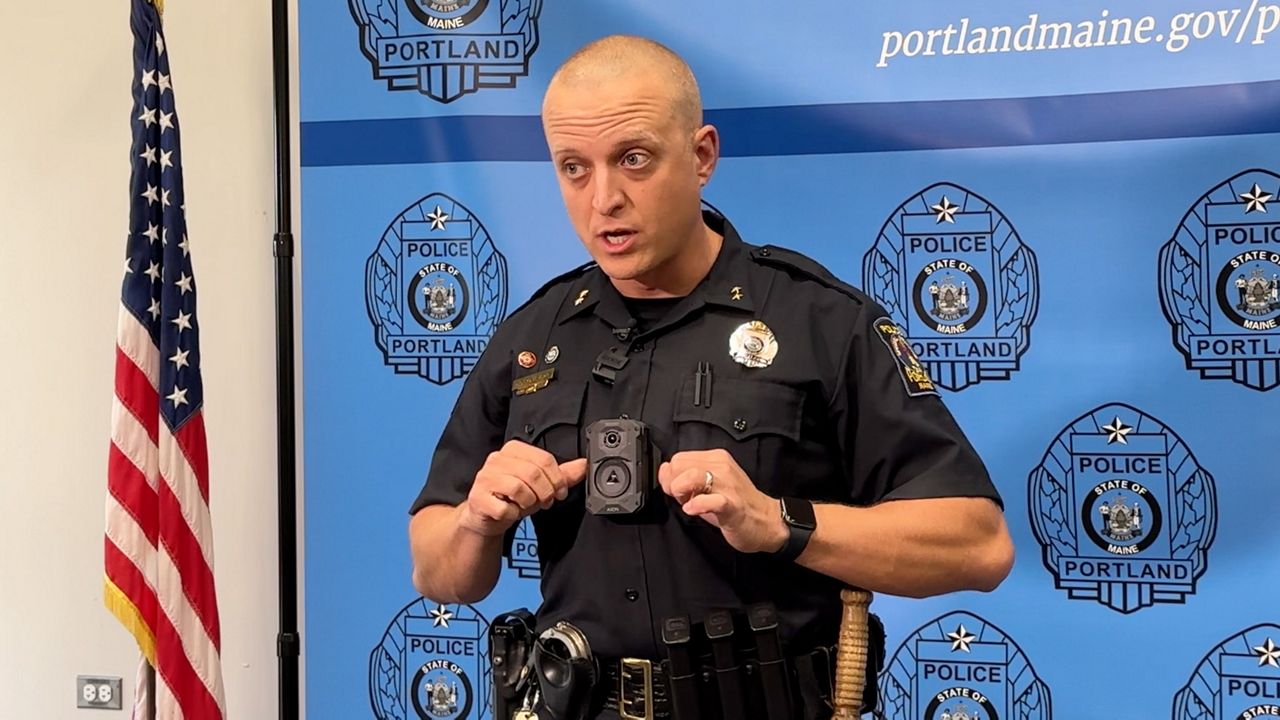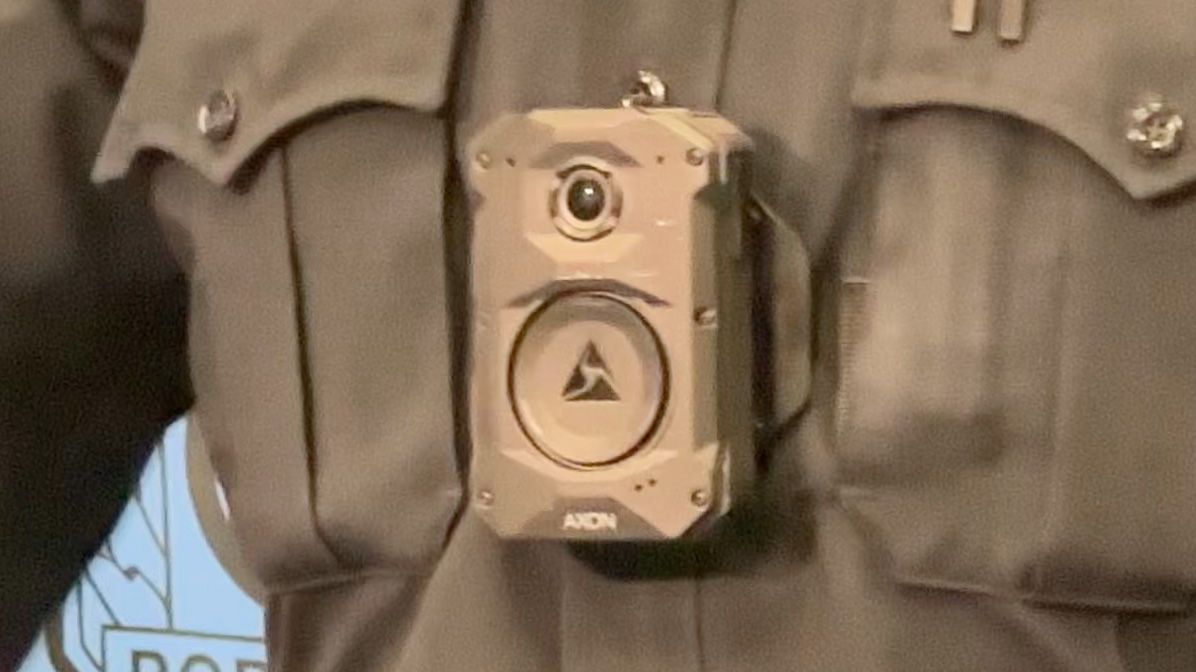A new report from the Maine Attorney General’s Office shows that more law enforcement agencies in Maine are now using body-mounted digital cameras than just three years ago, matching or exceeding statistics recorded among departments nationwide.
“Body-worn cameras are widely supported by the public and are being utilized at higher rates than ever by law enforcement agencies,” said Maine Attorney General Aaron Frey. “They are a critical tool in assessing equitable policing and ensuring public confidence in law enforcement.”
The AG’s office collaborated with the Maine Statistical Analysis Center to produce the report, issued on Monday. Researchers compiled data by surveying “all law enforcement departments (municipal, county, state, tribal, and university/college) statewide.” The report is a follow-up to a similar survey conducted in 2021.
According to the report, 77% of the state’s law enforcement community responded, and 70% of responding departments indicated their personnel use body cameras in their work. An additional 21% were not using them but considering using them in the future.
The Portland Police Department has been using body cameras since 2018, according to Maj. Jason King. The department has 130 cameras right now, enough to equip all patrol officers and detectives.
“I always say, it’s saved us more than it’s hurt us,” he said. “I like going on a scene and knowing that someone can’t skew my words or say that I did something that didn’t happen, you know, when it’s all recorded.”
The AG’s report cited national data indicating growing interest in body cameras. Data on body camera use nationwide from 2016 showed 45.1% of municipal police departments and 43.7% of sheriff’s departments used the cameras.
By 2020, those numbers had grown to 61.8% of municipal police departments and 64.6% of sheriff’s departments.
In Maine, the report’s data indicates a growing trend, too. In 2021, only 48% of responding departments indicated they were using body cameras, and only 25% more were considering using them.
On Tuesday, King demonstrated how the cameras worked at the police station in Portland. Resembling a slightly larger version of a chunky, industrial-grade cell phone, the camera clipped to a harness on the front of King’s chest. It blended in with the rest of his gear, only making a few unobtrusive beeps when activated.
King said officers don’t have them turned on all the time but can activate them manually when needed.
“If you’re getting a coffee, and someone comes up and says, ‘Hey, how you doing?’ we’re not going to record that, because that’s not an ‘encounter,’ but as soon as they say ‘Hey, I want to report a crime,’ then we would turn the camera on and start recording information,” he said.

King said there are other limitations. For example, he said, officers are not allowed to even wear them when entering, say, the Cumberland County Jail. Also, he said, when called to assist in a health care setting, they don’t turn the cameras on “until we’re actually dealing with something.”
Newer versions of the cameras can turn on automatically when it matters most. King said they are synced up with an officer’s equipment, such as a taser, so as soon as officers power up the weapon, the camera will turn on if it isn’t on already.
The cameras also link up wirelessly with a patrol officer’s laptop in a cruiser. While the cameras don’t provide a live feed to the laptop, like dash cams do, they are connected to the cruiser’s systems.
“Anytime the (red and blue) lights turn on, this camera turns on automatically, which is nice,” he said.
Not all departments are willing to commit to the cameras. The AG’s report indicated 8% of responding departments said they weren’t using them and weren’t planning to. For those departments, the report found, cost was a major factor.
King said his department recently purchased 10 upgraded cameras, along with software to use them, which will cost $160,000 over a 10-year period. That’s more manageable for a large department like Portland, he said, but even smaller departments should consider the investment.
“Cost is always a factor, but any technology now, there’s a cost to it,” he said.
The AG’s report indicated that by 2021, 23 states nationwide had passed laws requiring law enforcement to acquire and use body cameras. In 2019, the Maine legislature attempted to pass a similar law, but it was defeated.
In the report, the AG’s office did not suggest Maine attempt to pass a similar law again, citing the costs associated with the cameras.
“A state mandate that all law enforcement agencies adopt (body camera) programs is not recommended,” the report’s authors wrote. “The cost of such an unfunded mandate would be too burdensome.”
Other recommendations in the AG’s report included making use of federal grants to help smaller departments looking to buy the cameras, including “micro-grants” available to departments with 50 officers or fewer.
The report also suggested conducting more detailed interviews with rank-and-file officers in the future, along with more detailed cost analyses associated with the cameras. The report also suggested examining departmental policies regarding camera use as well.



